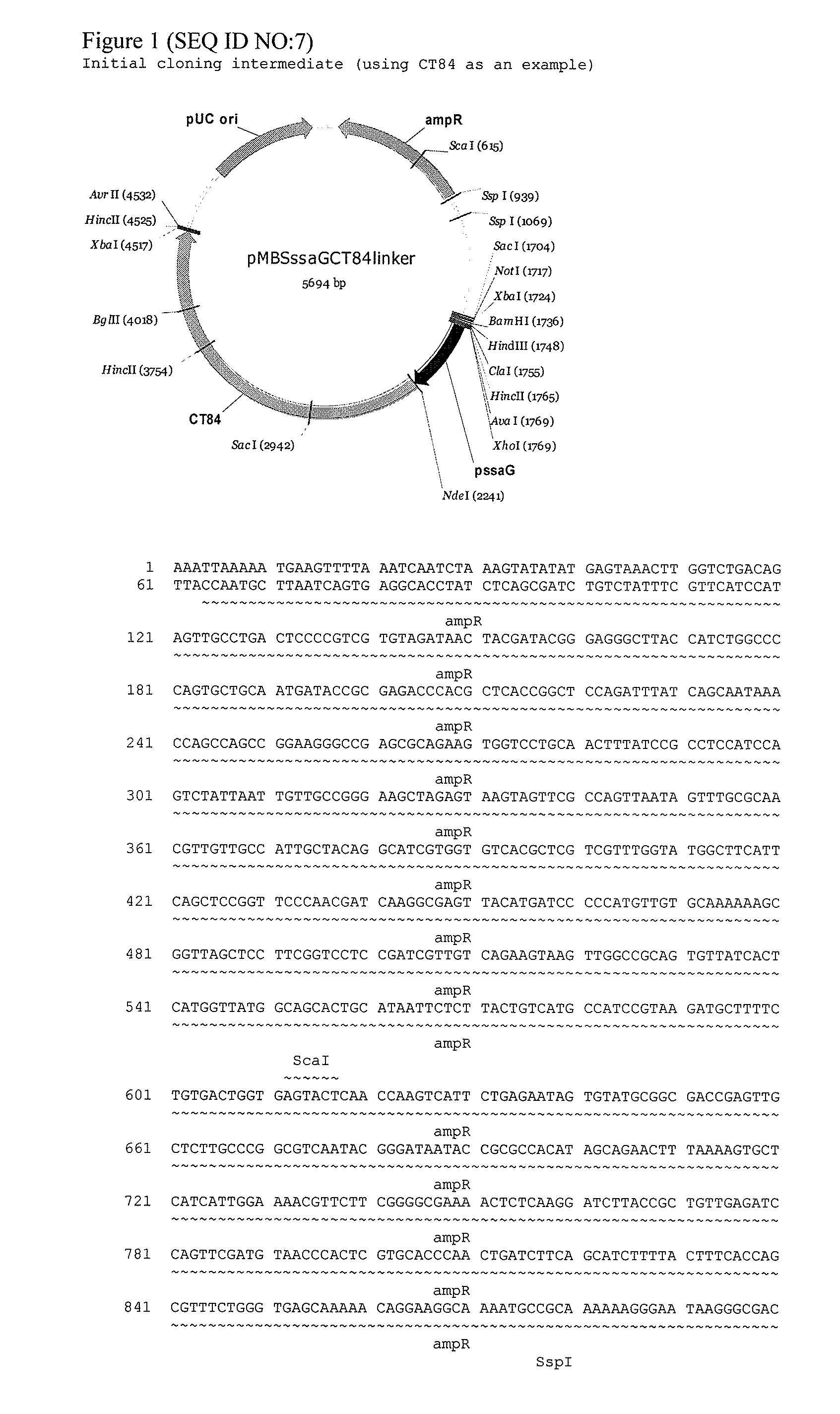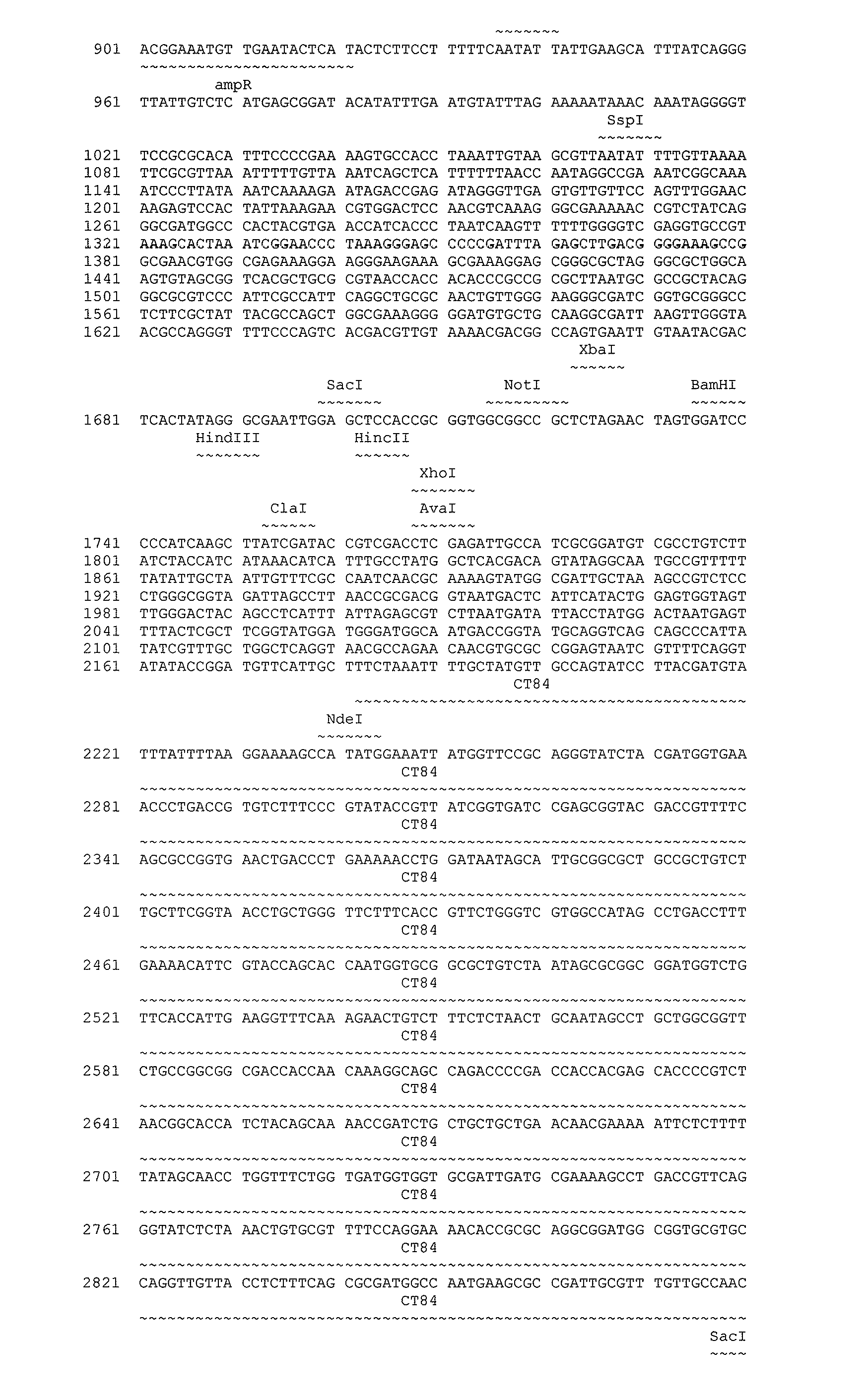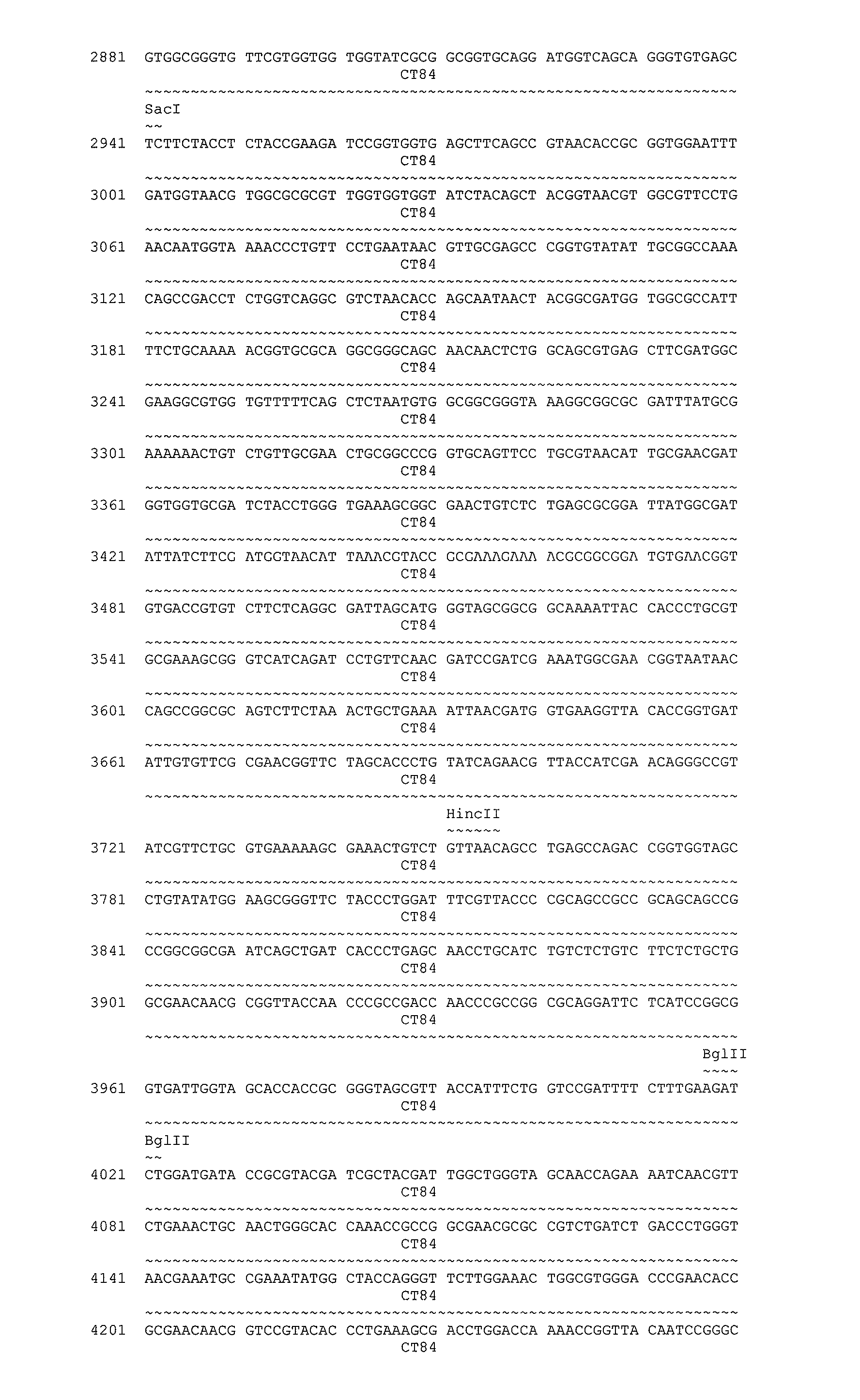Salmonella vectored vaccines against chlamydia and methods of use
a technology of salmonella and vectors, applied in the field of live salmonella vectors, can solve the problems of limited success and the /i>vaccine has not been advanced into a phase i clinical trial in over 40 years
- Summary
- Abstract
- Description
- Claims
- Application Information
AI Technical Summary
Benefits of technology
Problems solved by technology
Method used
Image
Examples
example 3
ital Infectivity Model
[0166]The modified Salmonella of the invention that express one or more Chlamydia trachomatis antigens (e.g., CT84 or CT110) can be evaluated as immunogens and vaccinogens using the generally accepted mouse C. trachomatis genital infectivity model. For instance, the model can be used to evaluate the constructs as immunogens and for the ability to protect BALB / c mice against challenge with various C. trachomatis serovars (e.g., L2, B, E). The modified Salmonella can be administered to groups of Chlamydia-free animals by three different immunization routes: oral, nasal or subcutaneous. For each route, the immunogenicity of the Salmonella can be determined, either alone or in combination with an appropriate adjuvant. After the first immunization, animals are periodically sacrified and serum IgG and mucosal (cervix / vagina and intestinal sIgA levels determined using known methodologies.
[0167]Six to eight week old (sexually mature), specific-pathogen free, female mic...
example 4
el of Salpingitis and Fertility
[0174]The Tuffrey murine infertility model can be employed to evaluate the efficacy of the modified Salmonella of the invention to protect animals against Chlamydia trachomatis-induced salpingitis and infertility. Groups of female C3H HeOuJ mice (about 6 weeks of age) can be employed for this evaluation. The test group of animals can be immunized at, for instance, weeks 0, 2, and 3 by intranasal administration of modified Salmonella. Prior to immunization mice can be sedated using an anesthesia cocktail consisting of, for instance, 16% Ketaject and 16% Xylaject in 68% pyrogen-free PBS (100 μl i.p. / animal). Sedated animals can be placed on their backs and using a standard laboratory pipette administered the vaccine formulation; about 10 μl of the vaccine solution per nostril with a 5-10 minute wait period between applications.
[0175]Briefly at week 4, all animals can be administered a single i.p. dose of progesterone (2.5 mg in pyrogen-free PBS, Depo-Pro...
example 5
umonitis Model
[0181]The modified Salmonella of the invention containing C. muridarum inserts (e.g., CT84 and CT110 analogs) can be analyzed using a mouse pneumonitis model. Briefly, the mouse model of female urogenital tract infection with Chlamydia muridarum (the mouse pneumonitis strain of Chlamydia trachomatis, MoPn) has been used for some time to study immunological protection related to chlamydial infections (Barron AL, et al., J Infect Dis. 1981;143:63-66 and Rank RG, Stephens RS, editors. Chlamydia: Intracellular Biology, Pathogenesis, and Immunity, American Society for Microbiology. Washington, D.C.: 1999. p. 295). More recently, it has been used to study pathological immune responses during chlamydia infection. Hydrosalpinx formation, infertility and fibrotic oviduct occlusion are routine consequences of infection following a single intravaginal inoculation of Chlamydia muridarum in susceptible mouse strains (Swenson CE, et al., J Infect Dis. 1983;148:1101-1107; Swenson CE ...
PUM
| Property | Measurement | Unit |
|---|---|---|
| Gene expression profile | aaaaa | aaaaa |
| Immunogenicity | aaaaa | aaaaa |
Abstract
Description
Claims
Application Information
 Login to View More
Login to View More - R&D
- Intellectual Property
- Life Sciences
- Materials
- Tech Scout
- Unparalleled Data Quality
- Higher Quality Content
- 60% Fewer Hallucinations
Browse by: Latest US Patents, China's latest patents, Technical Efficacy Thesaurus, Application Domain, Technology Topic, Popular Technical Reports.
© 2025 PatSnap. All rights reserved.Legal|Privacy policy|Modern Slavery Act Transparency Statement|Sitemap|About US| Contact US: help@patsnap.com



